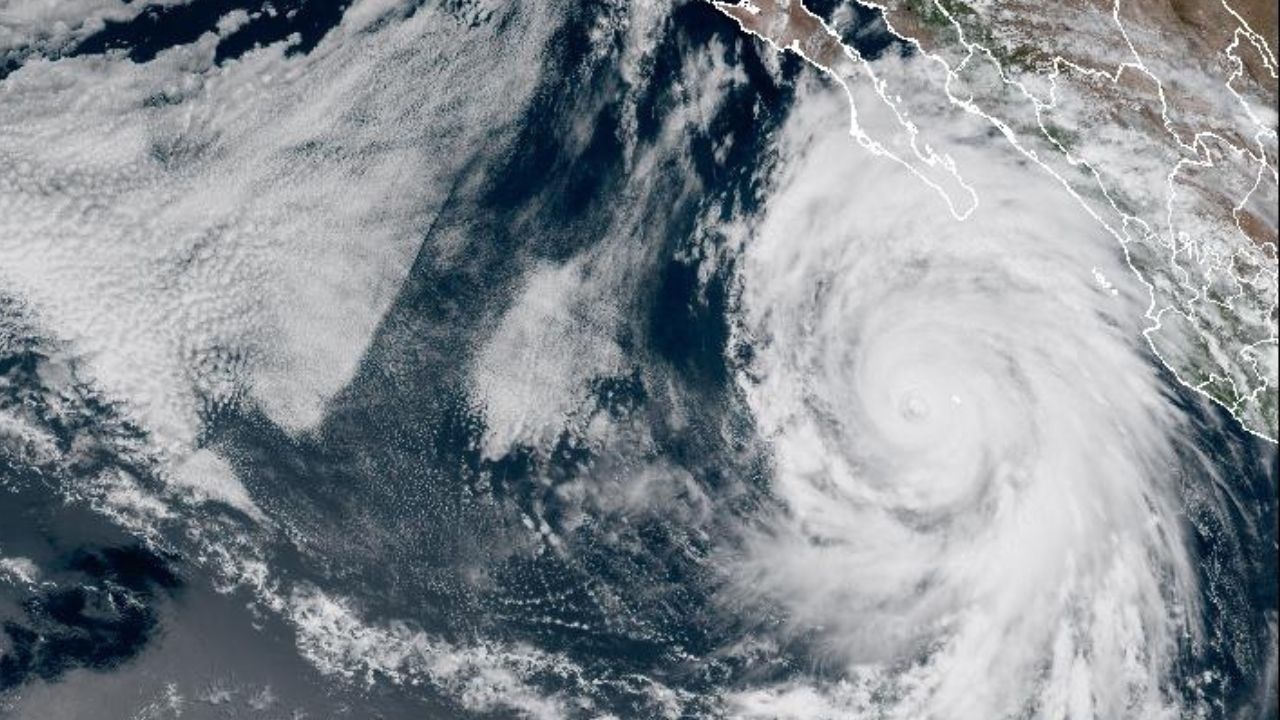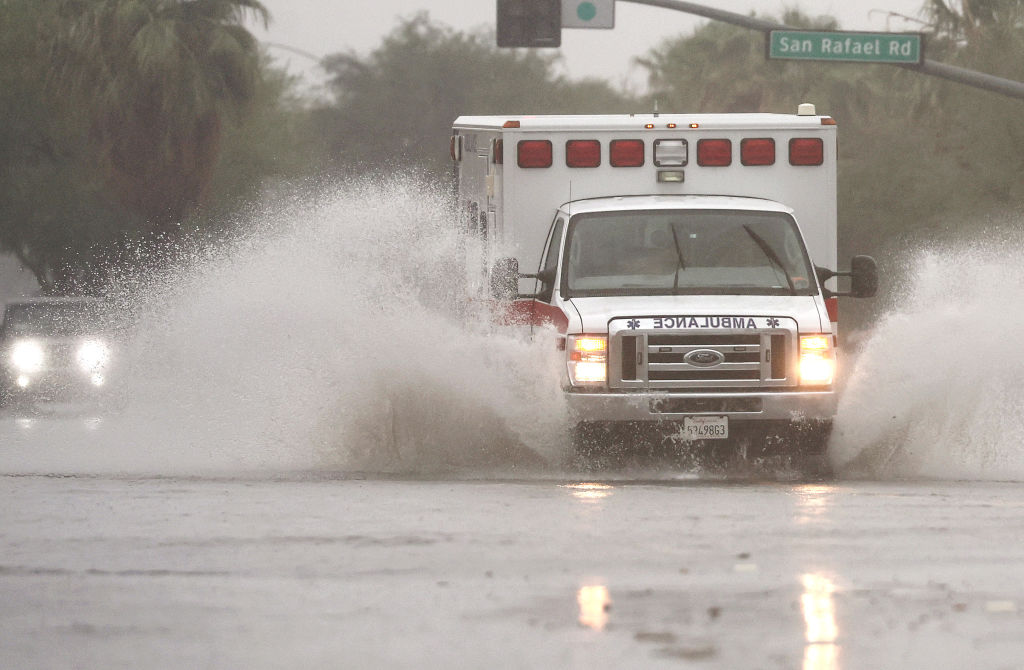Tropical Storm Hilary drenched Southern California from the coast to the desert resort city of Palm Springs and inland mountains, forcing rescuers to pull several people from swollen rivers.
By early Monday, remnants of the storm that first brought soaking rains to Mexico's arid Baja California peninsula and the border city of Tijuana, threatened Nevada and as far north as Oregon and Idaho with flooding.
Southern Californians were battling flooded roads, mudslides and downed trees.
“Thank God my family is OK,” Maura Taura said after a three-story-tall tree crashed down on her daughter's two cars but missed the family's house in the Sun Valley area of Los Angeles.
Southern California got another surprise Sunday afternoon as an earthquake with a preliminary magnitude of 5.1 hit near Ojai, about 80 miles northwest of downtown Los Angeles, according to the U.S. Geological Survey. It was felt widely and was followed by smaller aftershocks. There were no immediate reports of major damage or injury, according to a dispatcher with the Ventura County Sheriff's Office.
The storm first made landfall in Baja California Peninsula on Sunday in a sparsely populated area about 150 miles (250 kilometers) south of Ensenada. One person drowned. It then moved through mudslide-prone Tijuana, threatening the improvised homes that cling to hillsides just south of the U.S. border.
The first tropical storm to hit Southern California in 84 years, Hilary dropped more than half an average year's worth of rain on some areas, including the desert resort city of Palm Springs, which saw nearly 3 inches (7.6 centimeters) of rain by Sunday evening.
The National Hurricane Center in Miami downgraded Hilary to a post-tropical storm in its early Monday advisory, but warned that “continued life-threatening and locally catastrophic flooding” was expected over portions of the southwestern U.S. on Monday. All coastal warnings were discontinued.
Forecasters warned of dangerous flash floods across Los Angeles and Ventura Counties, and fire officials rescued 13 people from knee-deep water in a homeless encampment along the rising San Diego River. Meanwhile, rain and debris washed out some roadways and people left their cars stranded in standing water. Crews pumped floodwaters out of the emergency room at Eisenhower Medical Center in Rancho Mirage.
Feeling out of the loop? We'll catch you up on the Chicago news you need to know. Sign up for the weekly Chicago Catch-Up newsletter.
Sunday was the wettest day on record in San Diego, with 1.82 inches (4.6 centimeters), the NWS said in a post on X, formerly known as Twitter. The previous record was on Aug. 17, 1977, when 1.8 inches (4.5 centimeters) of rain fell in the area post-Hurricane Doreen.
The Los Angeles Unified School District, the nation’s second largest school system, and said all campuses would be closed on Monday, as did districts across the region. San Diego schools postponed the first day of classes from Monday to Tuesday.
The Palm Springs Police Department said in a statement Sunday that 911 lines were down and that in the event of an emergency to text 911 or reach out to the nearest police or fire station.
The storm was projected to weaken as it continued moving northward over California and into Nevada, but Richard Pasch, a hurricane specialist with the National Hurricane Center, said “very heavy” rain and strong winds are still likely.
As skies were clearing Monday in California, the National Weather Service warned of flooding underway in the Mount Charleston area west of Las Vegas. Forecasters said the threat for flooding in states farther north on Monday was highest across much of southeastern Oregon into the west-central mountains of Idaho “with record breaking precipitation” forecast for Monday morning.
Forecasters at the National Hurricane Center, meanwhile, were watching a disturbance in the Gulf of Mexico that now has an 80% chance of developing into a tropical disturbance or tropical storm before reaching the western Gulf coastline on Tuesday. Forecasters urged people along the coast in northern Mexico and Texas to monitor the system, adding that tropical storm watches or warnings may be issued later Monday.
___
Lebrija reported from Ensenada, Mexico. Associated Press contributors include Curt Anderson in St. Petersburg, Florida; Ignacio Martinez in Cabo San Lucas, Mexico; Mark Stevenson in Mexico City; Eugene Garcia in San Diego; Ryan Sun and Christopher Weber in Los Angeles; and Walter Berry in Phoenix.



